Britten wrote his opera A Midsummer Night’s Dream to celebrate the reopening of Aldeburgh’s Jubilee Hall in June 1960 following building work. Seven years later, during the 1967 Aldeburgh Festival, this was the first opera to be performed in the newly opened Snape Maltings Concert Hall. The production was a new one given by the English Opera Group with scenery and costumes designed by Emanuele Luzzati and produced by Colin Graham.
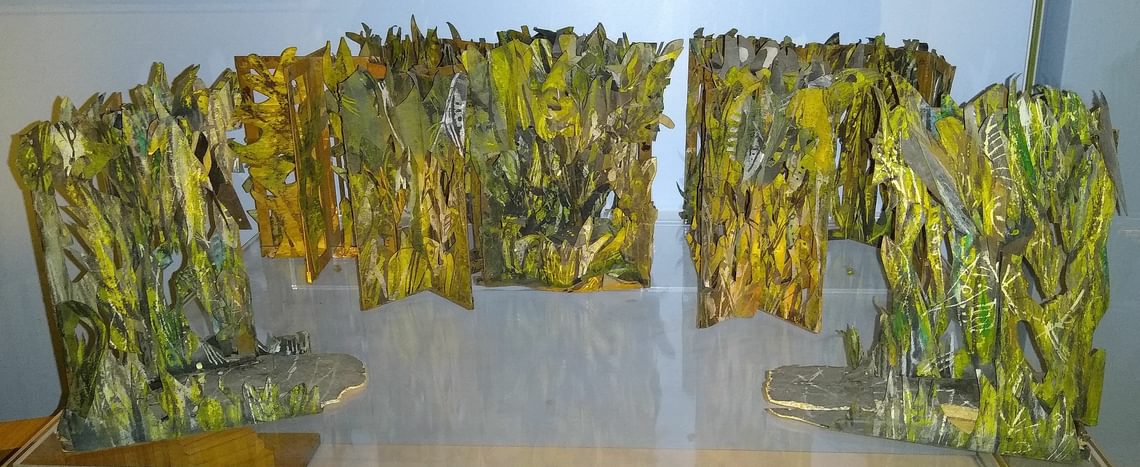
Set model of Luzzati’s design
We have recently recorded oral history interviews with members of the stage management team from 1967, and their memories together with documents created as part of their work (which are now part of our archive) tell us more about this production of Britten’s opera.
Joint stage manager Michael Friend recalls that at Snape Maltings ‘There was to be no proscenium arch so the platform was visible from side wall to side wall. This was the challenge given to the designer. Emanuel Luzzatti lived up this challenge brilliantly. His design consisted of five steel towers mounted on wheels and clad in plywood cut to represent the outline of trees. These were moved by the six boys playing the fairies, and could form endless new forest glades. Then for Act III, flats to represent house fronts, painted in a deliberate child-like manner, were attached to the backs so that they could be revealed at the appropriate moment for the final scenes. This though presented us with a problem. The steel towers were 20 feet high and once we were ready to rehearse the movements of these towers with the boys we faced the fact that not many rehearsal spaces have ceilings that high. That was why we found ourselves in the Artillery Hall, Holborn'.
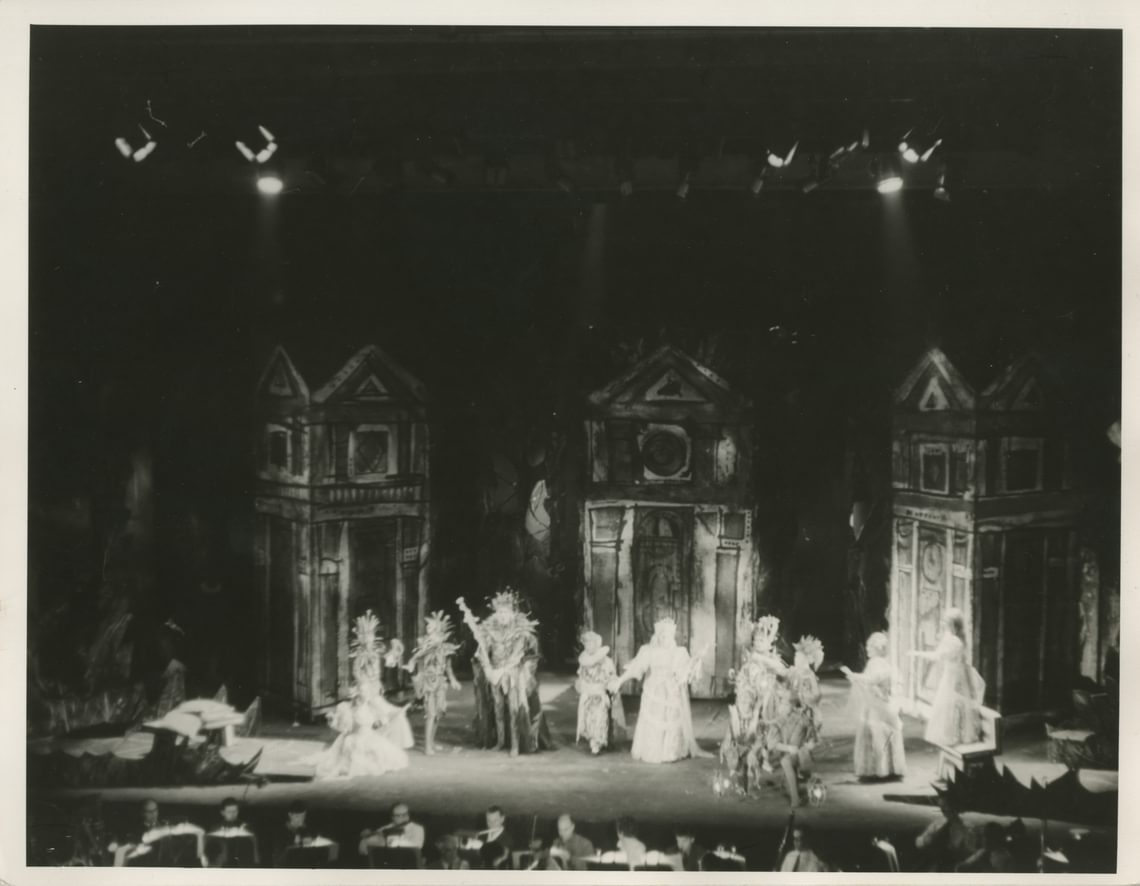
The production on tour at the Odéon Theatre Paris where the steeply raked stage meant brakes had to be fitted to the towers.
Credit: RichardsonAssistant stage manager John Richardson took photographs of the scenery on stage at Snape Maltings and it is interesting to compare these to Luzzati’s set model. He also took photographs backstage of the singers in their costumes.
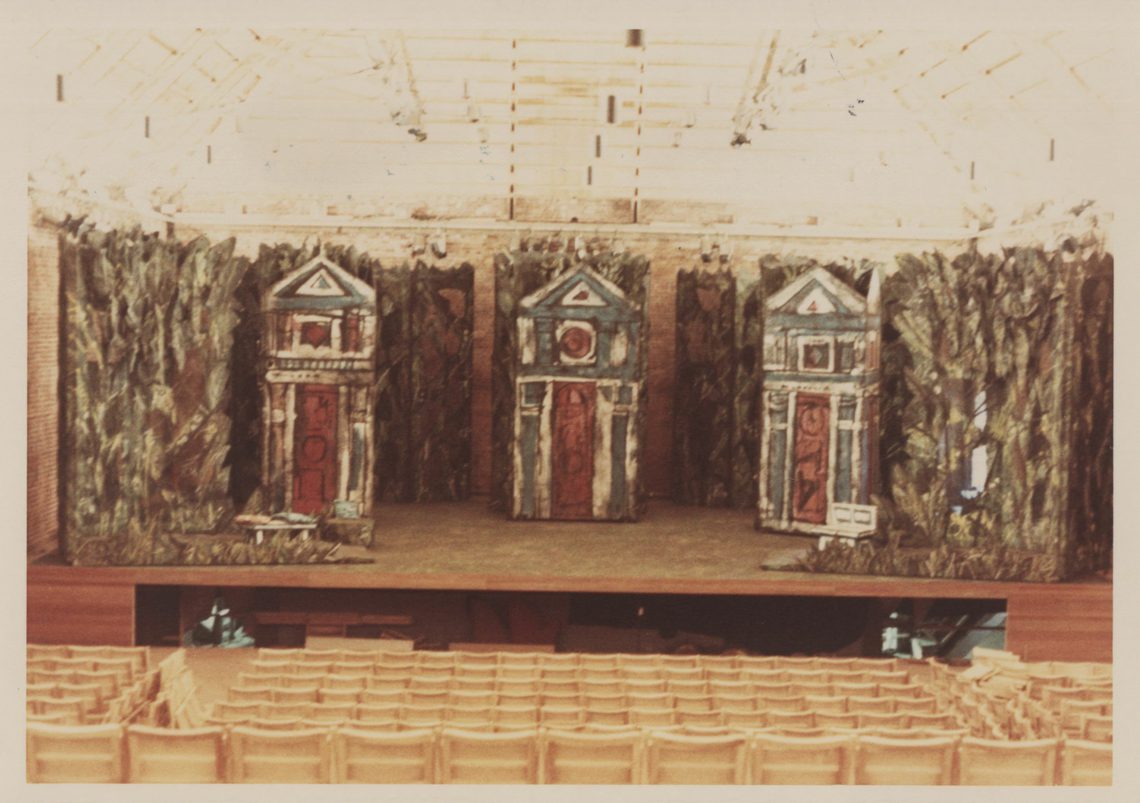
Scenery for Act 3 on the stage at Snape Maltings Concert Hall
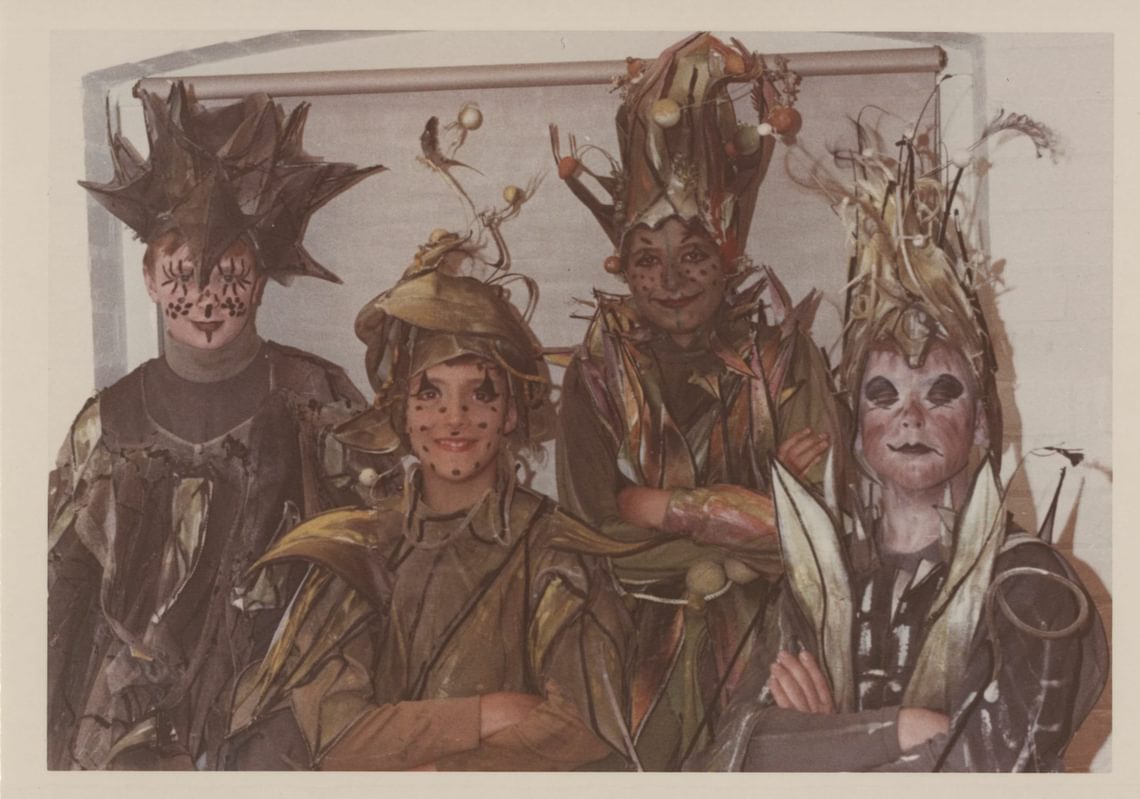
Photograph of Cobweb, Mustardseed, Peasblossom and Moth
The tasks of the stage management team were numerous – John Richardson recollects that they were ‘in charge of the rehearsals and the prop gathering and the shopping and the tea making and generally controlling the personnel’. Keeping a tight control over set, props and costumes involved making detailed lists and schedules which are now found in our archive.
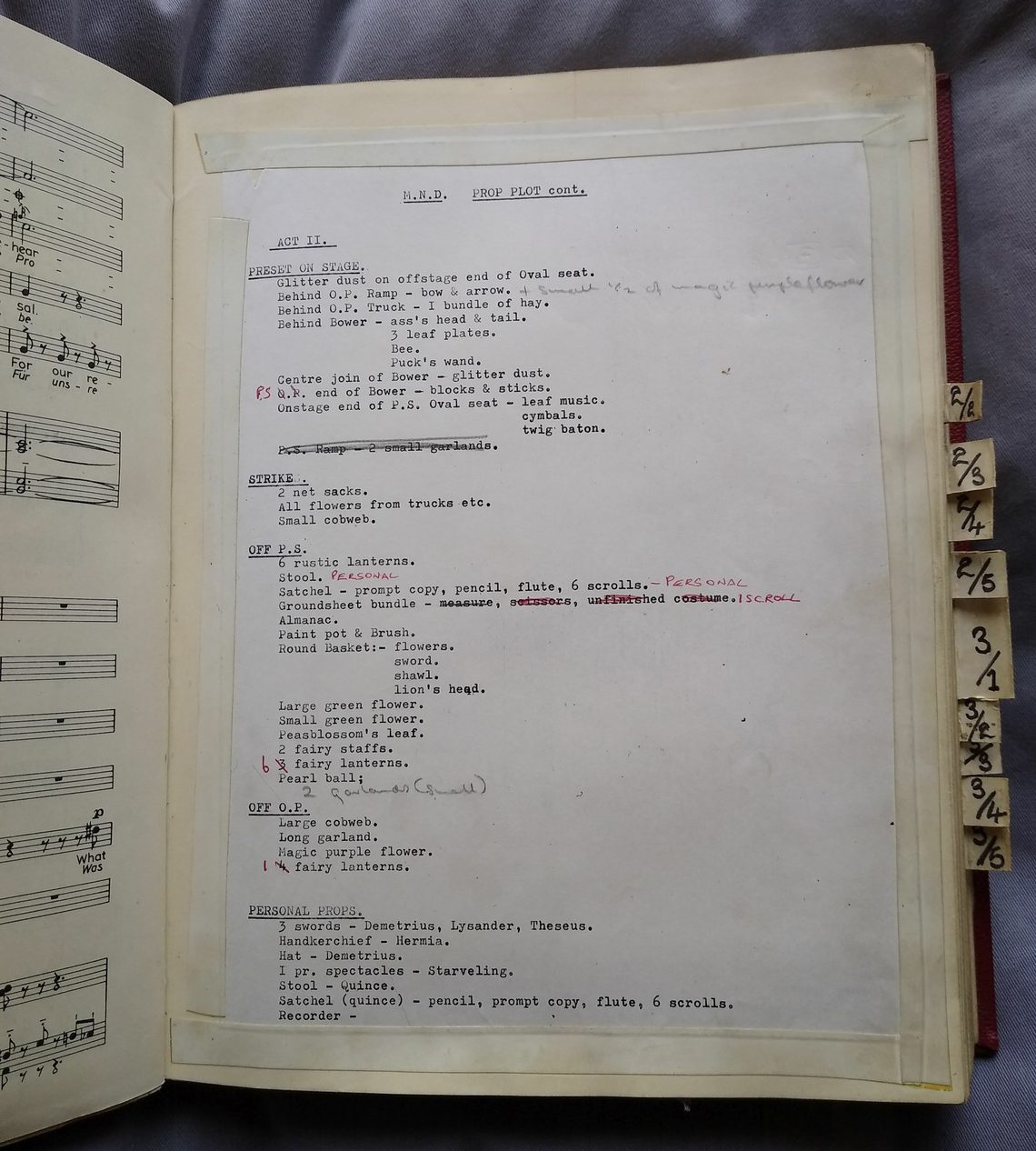
Prop plot recording details of the set up needed for Act I
John Richardson recalls that in rehearsals ‘the deputy stage manager’s job is to note the production, in the production score, so that’s quite an important job – you need to be able to follow the music. And if you’ve seen the production scores they’re generally interleaved with a blank page facing the music and the notation, so that was my job, and it was really really difficult to do it.’ Indeed, looking through the production scores in the archive, we see numerous diagrams detailing layouts of set and props, as well as the positions and movements of the singers on the stage, so that decisions made at rehearsals were recorded and taken forward to the performance.
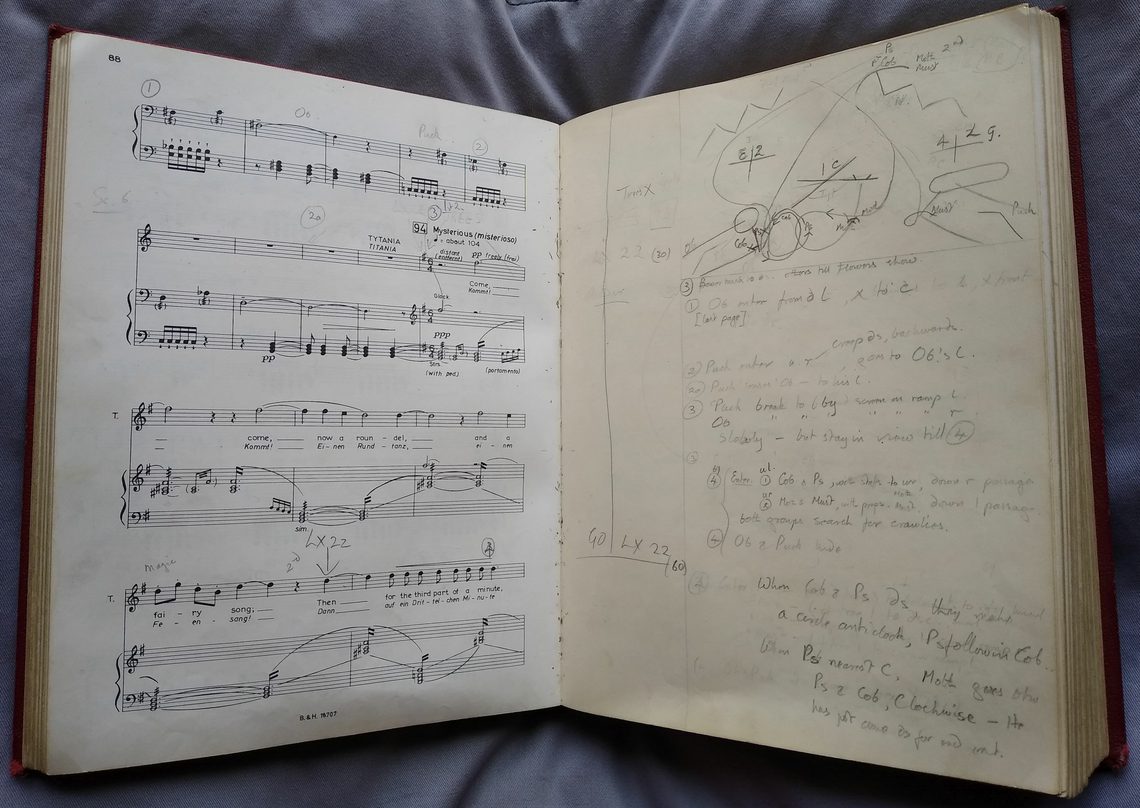
Production score with stage management’s copious notes and diagrams.
On performance nights the stage management team were responsible for giving cues to singers and for the lights. Michael Friend’s job in A Midsummer Night’s Dream was ‘largely confined to keeping track of the boys, cueing in their entrances and continually repairing the illuminated bunches of twigs they carried. They had an unkind habit of not telling me they needed a new battery until 30 seconds before going on stage.’ The team kept detailed notes in their published score of the cues and pre-sets required for the performance.
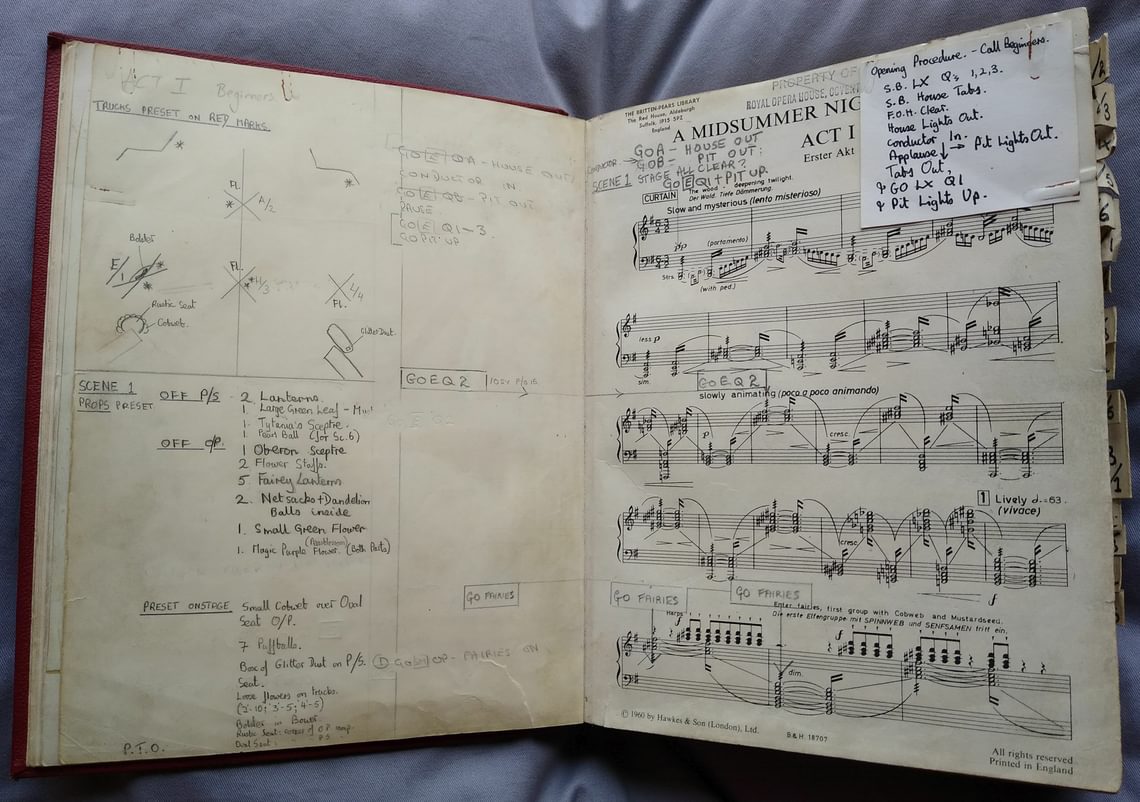
Stage management’s score with singer and lighting cues, and set and prop pre-sets for the opening scene.
Stage management also kept time books – recording running times as well as information such as performance night cast changes and number of curtain calls taken, as well as notes on any mishaps or accidents, or things to bear in mind for future performances.
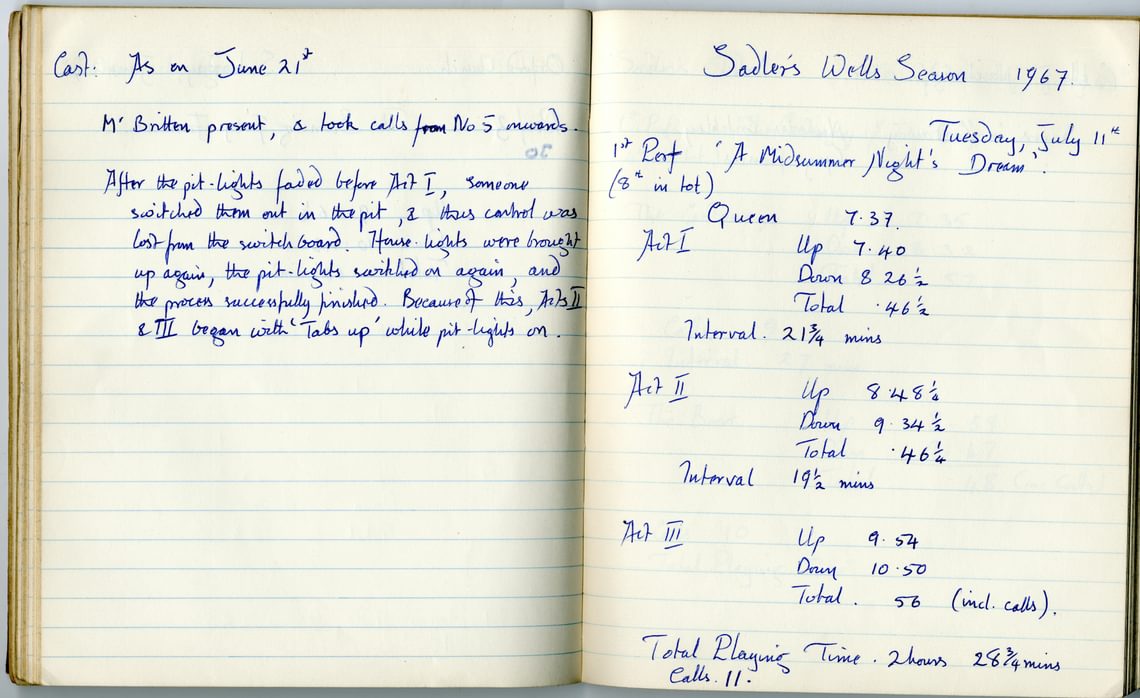
Page from time book for first night of the English Opera Group 1967 season at Sadler’s Wells
Richardson notes ‘So that’s it basically in a nutshell… so there’s no glamour involved but we had to wear a bow tie backstage – at least the men did – which was the old style, in those days – dinner suits – which doesn’t seem to go with the backstage idea.’
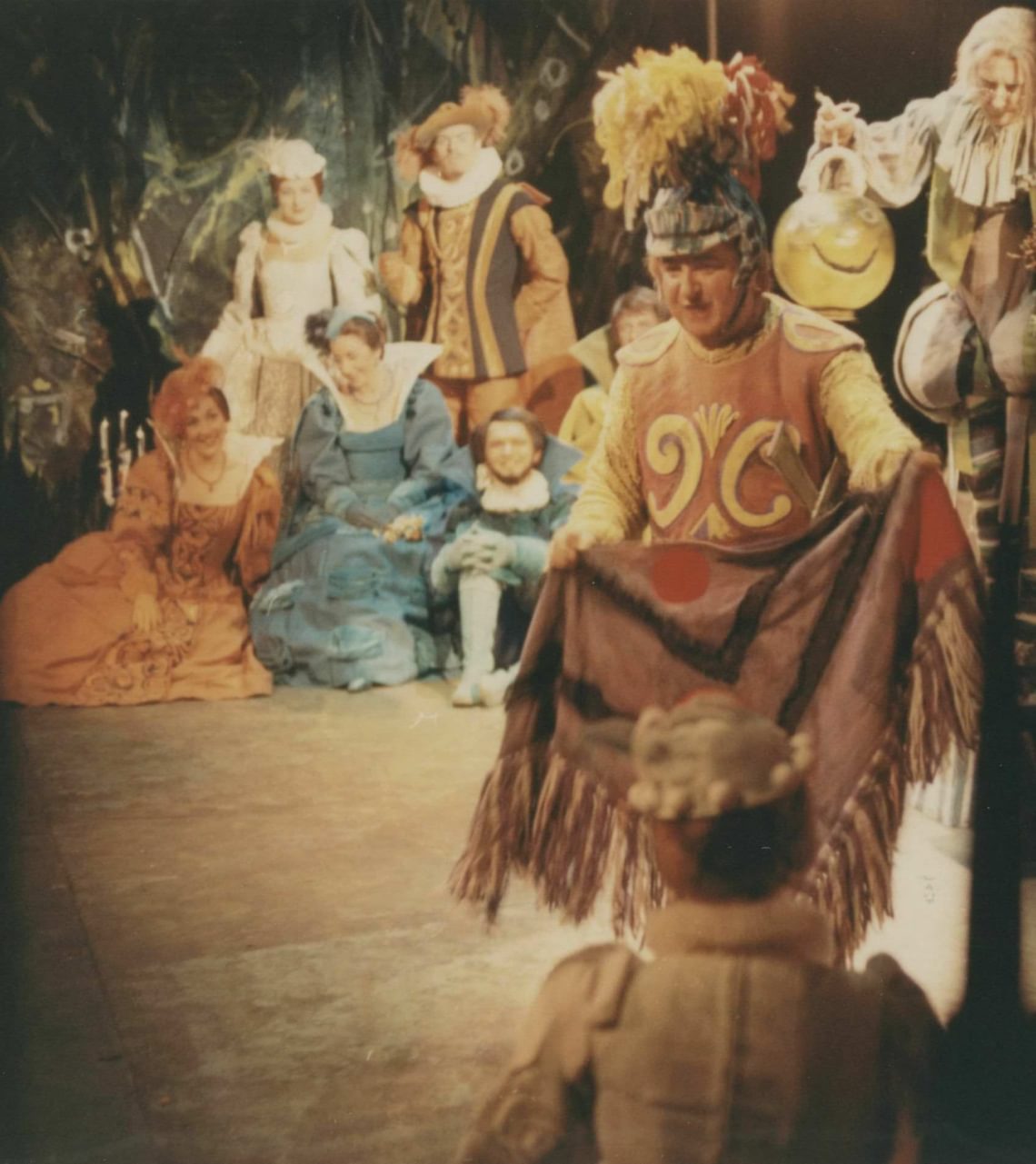
Owen Brannigan as Bottom in the production at Sadler’s Wells. Photo: Richardson
However on opening night at Snape Maltings Richardson found himself having to go on stage ‘the boy playing Puck, a chap called Stephen Terry, had an accident: he walked into a stage weight in the dark at the dress rehearsal … and he cut his foot, because he was barefoot, so consequently he wasn’t able to do the performance the next day, and his understudy was in the chorus, a chap called Clive Molloy, and I fitted Clive’s costume for the third act scene in Duke Theseus’s palace, and all I to do was walk on stage with a candelabra, an electric button on the back to light it up and I had to stand there looking attractive, and I was yards away from Ben and Peter in the stage box, and when I came off at the end, the stage manager, Myra Thomas, said to me ‘I’ve never seen so much overacting in my life!’ so that was my first stage appearance and the last’.
You can see more of Richardson’s fantastic photographs of English Opera Group productions on our online archive catalogue
- Judith Ratcliffe, Archivist
